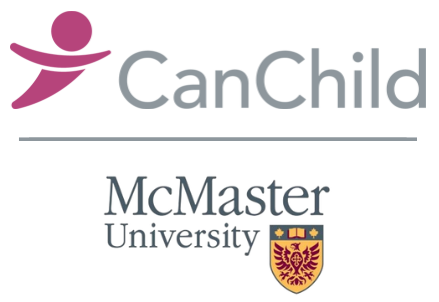Gross Motor Family Report, a new family-completed questionnaire (GM-FR) is designed to enable families to report the gross motor activities of their children or adolescents with Cerebral Palsy (CP) at home and in their communities.
Read Resources
Care Pathway for Dystonia in Cerebral Palsy
Key Messages on the “New”AACPDM Care Pathway for Dystonia in Cerebral Palsy video.
Read Resources
Children with Epilepsy Quality of Life (CHEQOL): Parent and Child Questionnaire
Developed in 2003 by Drs. Gabriel M Ronen, Peter L Rosenbaum, and David Streiner, the Children with Epilepsy Quality of Life (CHEQOL): Child and Parent Questionnaires seek to understand the quality-of-life factors that matter most to children and their families.
Read Resources
Telepractice Resources For Pediatric Communication Professionals And Families Of Children With Speech, Language, And Communication Needs
Researchers from CanChild talked with parents and communication professionals to understand their experience with therapies provided virtually during the COVID-19 pandemic. The goal of this project was to understand people’s experiences to inform future telepractice.
Read Resources
About My Child
About My Child is a caregiver report of a child’s strengths and interests coupled with a measure of common parental concerns about functioning and the impact of the concerns on their child’s participation in everyday activities.
Read Resources
Simulations to Promote Authentic and Meaningful Partnerships in Childhood Disability Research
4 short videos co-developedwith youth, parents, trainees,and researchers to promotediscussion and learning onauthentic and meaningfulpartnerships in research.
Read Resources
Access and Equity Guide
These questions provide a guide for conversations with families. They can be asked following or in conjunction with the identification of strengths and concerns
Read Resources
How to support kids in times of crisis?
Evidence-based and endorsed by international organizations suggestions.
Read Resources
CP-NET Meet the Expert: Neurotechnology
Dr. Elaine Biddiss and Dr. Anna McCormick answered questions about the CP-NET neurotechnology platform and a video game (Bootle Blast) that they developed to track the movement of children with cerebral palsy.
Read Resources
Traffic Lights Model for Cerebral Palsy Interventions
Professor Iona Novak answered several questions about the State of the Evidence Traffic Lights 2019 systematic review on interventions for preventing and treating cerebral palsy in children.
Read Resources
